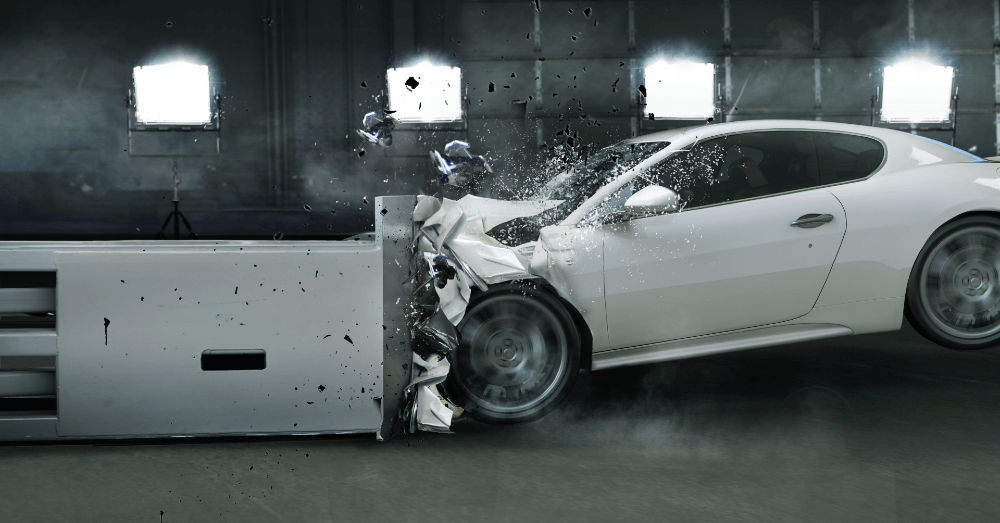Most vehicles receive safety ratings that are pretty easy to understand, but you might not be aware of what goes into making these ratings.
The NHTSA and IIHS test and crash vehicles regularly to rat them regarding their safety features and occupant protection. For many years, these agencies crashed the cars and tested the crumple zones and passenger survival, but today’s cars add another level of testing to the mix. Many new vehicles include several advanced safety features, which now go into the star ratings from the NHTSA and the safety pick ratings of the IIHS.
Crash tests make the grade
Whether it’s the NHTSA Five-Star rating or the IIHS Top Safety Pick+ rating, a vehicle must perform well in several crash tests in order to receive these scores. The NHTSA is part of the Department of Transportation and a government-run agency that puts vehicles through a battery of tests. The IIHS grades vehicles in six different crash tests, and they must earn a grade of Good in all six in order to achieve the highest safety ratings from this organization.
Let’s look at some of the crash tests these vehicles are put through as covered by Car and Driver.
Frontal Crash Test
This is an NHTSA test which simulates a head-on collision between tow vehicles. The test vehicle is crashed into a fixed barrier at 35 mph with two crash-test dummies placed in the vehicle. The dummies wear seatbelts during ever test, which gives the NHTSA a good look at weak points in the safety equipment.
IIHS Moderate-Overlap Front
Cars are driven into a two-foot-tall deformable barrier at 40 mph. The vehicle strikes the barrier with 40 percent of its front width on the driver’s side of the vehicle. This crash test simulates a head-on collision between two vehicles of similar weight. The IIHS uses one average-size male test dummy in the driver’s seat for this test.
Side Barrier Crash Test
The side pole crash test goes toward safety ratings by testing how a vehicle handles another crashing into the side of it. The NHTSA uses a 3015-pound barrier that crashes into the vehicle at 38.5 mph. Two crash test dummies are placed in the car, one in the driver’s seat and the other in the seat directly behind the driver.
IIHS Driver’s-Side Small-Overlap Front/Passenger-side Small-Overlap Front
These two tests simulate two vehicles crashing into each other head on by crashing a vehicle into a fixed barrier at 35 mph. In both tests two crash-test dummies are placed in the vehicle, wearing seatbelts to simulate the crash conditions. One test is performed on the driver’s side, and the other is performed on the passenger side of the vehicle.
Side Pole Crash Test
This crash simulates what happens if a driver slides off a road and crashes into an object such as a utility pole or the end of a guard rail. This test is added to the safety rating of the NHTSA and is performed with a vehicle pulled at 20 mph at a 75-degree angle into a 9.5-inch diameter pole.
IIHS Side Impact
Using a 3300-pound SUV-like test barrier crashing into the driver’s side of a vehicle at 31 mph, this IIHS tests the strength of the side crash area of a vehicle. Two test dummies are used with them placed in the same positions as in the NHTSA side barrier crash test.
Rollover Resistance Test
This NHTSA test determines a vehicle’s susceptibility to rolling over at highway speeds. This is done in a lab using a measurement called the Static Stability Factor which determines the vehicle’s scenter of gravity. Vehicles aren’t physically crashed during this test, but it does factor into the overall safety rating.
IIHS Roof Strength
During this test, a metal plate is forced downward on the roof of a car until the roof crushes exactly five inches. The force used to crush the roof goes into the calculation and is called the strength-to-weight ratio test for the roof of a vehicle. This test helps determine how well a vehicle would perform in a rollover.
IIHS Head Restraints
This test simulates a rear-end collision with a static vehicle hitting the test car from behind at 20 mph. The force exerted on the driver’s neck and spine are calculated using crash-test dummies. This test helps determine how well the head restraints of a vehicle protect passengers during a crash.
These crash tests go a long way in determining the vehicle safety ratings from the NHTSA and IIHS. These agencies also test safety features such as forward emergency braking, lane-keeping assist, and headlights.
